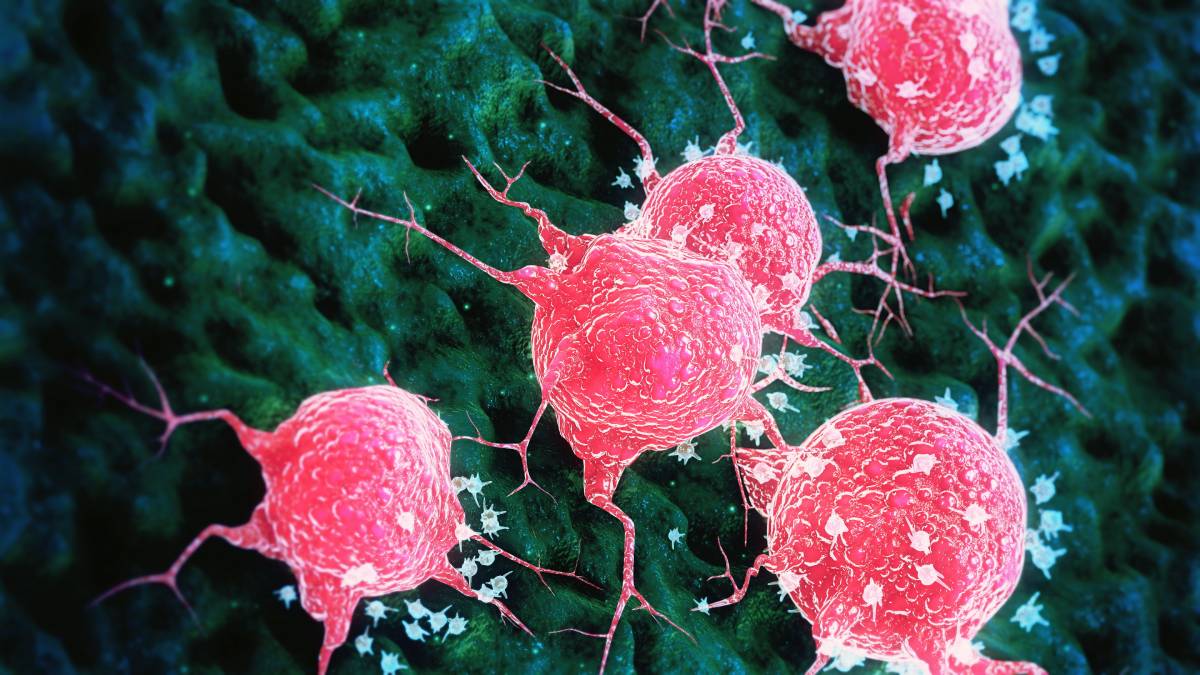A carcinogen is a chemical, substance, or type of radiation that can cause cancer. These agents induce cancer by causing mutations in DNA; if these mutations occur in genes that regulate cell growth, a cell can begin to grow uncontrollably and thereby become cancerous. The amount of time it takes for a carcinogen to cause cancer – if it does so at all – depends on the type of carcinogen, as well as the duration and intensity of exposure. Tobacco and ultraviolet light are among two of the most well-known carcinogens. Cancer research and treatment remains a major field of medicine. However, even some substances used in medical care are carcinogenic.
X-rays, which are high-energy waves of electromagnetic radiation, penetrate the body and can damage DNA. X-rays can lead to cancer, though it is thankfully quite rare. According to one estimate of patients in the UK, only 0.6% of the lifetime risk of developing cancer is attributable to diagnostic x-rays (the number varies slightly in other countries but does not exceed 3%).1 Computed tomography (CT) scans offer a higher resolution than x-rays and produce more radiation but are also overwhelmingly safe. In a cohort of patients that received multiple CT scans, only 1% of total cancer mortality was attributable to CT scans.2
In addition to certain types of medical imaging, another carcinogen in medical care, is, ironically, chemotherapy itself, the use of drugs to destroy cancer cells. Though chemotherapy drugs are specifically selected to fight their target cancer, they can also be carcinogenic substances in other directions. A study by researchers at the National Cancer Institute found that chemotherapy for solid tumors led to a statistically significant increase in therapy-related myelodysplastic syndrome/acute myeloid leukemia (tMDS/AML), a rare form of blood cancer.3 Though this type of chemotherapy significantly improves patient outcomes, it increases the risk of tMDS/AML by 1.5 fold up to 10 fold in all solid cancer types other than colon cancer.3
Radiotherapy is a cancer treatment that uses high doses of energy to kill cancer cells. A study conducted by Stanford Medicine researchers of over 140,000 men with prostate cancer found that radiotherapy led to a small but significant increase in the risk of developing a second primary cancer.4
A major study by the Kaiser Permanente Medical Care Program assessed 105 common prescription drugs for the possibility of being carcinogenic substances, including amoxicillin, ibuprofen, and ciprofloxacin.5 Recipients of these drugs, which numbered over 100,000, were monitored for up to 12 and a half years for cancer. 61 of the 105 drugs met the threshold for possible increased cancer risk. Some of these associations are unreliable due to the presence of confounders, factors that influence both the independent and dependent variable, but a few of the associations were free of these mitigating factors. One such association was that of a drug called oxazepam, which is used to treat anxiety and alcohol withdrawal, with lung cancer. Later experiments have shown that long-term use of benzodiazepines, a class of drugs derived from oxazepam and similar drugs, are associated with a 10% increase in the risk of developing lung cancer.6
Overall, the risk of developing cancer from cancer treatments and prescription drugs available to patients is extremely low. The Food and Drug Administration in the US,7 as well as other similar regulatory agencies elsewhere, have rigorous protocols in place to prevent carcinogenic substances from reaching consumers, whether through medical care or other aspects of daily life. Though medical care itself does expose some patients to carcinogens, the risk associated with exposure is much lower than the risk associated with forgoing treatment.
References
1. Berrington de González, A. & Darby, S. Risk of cancer from diagnostic X-rays: estimates for the UK and 14 other countries. Lancet Lond. Engl. 363, 345–351 (2004), DOI: 10.1016/S0140-6736(04)15433-0
2. Sodickson, A. et al. Recurrent CT, cumulative radiation exposure, and associated radiation-induced cancer risks from CT of adults. Radiology 251, 175–184 (2009), DOI: 10.1148/radiol.2511081296
3. Morton, L. M. et al. Association of Chemotherapy for Solid Tumors With Development of Therapy-Related Myelodysplastic Syndrome or Acute Myeloid Leukemia in the Modern Era. JAMA Oncol. 5, 318–325 (2019), DOI: 10.1001/jamaoncol.2018.5625
4. Bagshaw, H. P. et al. Assessment of Second Primary Cancer Risk Among Men Receiving Primary Radiotherapy vs Surgery for the Treatment of Prostate Cancer. JAMA Netw. Open 5, e2223025 (2022), DOI: 10.1001/jamanetworkopen.2022.23025
5. Friedman, G. D., Udaltsova, N., Chan, J., Quesenberry, C. P. & Habel, L. A. Screening pharmaceuticals for possible carcinogenic effects: initial positive results for drugs not previously screened. Cancer Causes Control CCC 20, 1821–1835 (2009), DOI: 10.1007/s10552-009-9375-2
6. Iqbal, U. et al. Is Long-term Use of Benzodiazepine a Risk for Cancer? Medicine (Baltimore) 94, e483 (2015), DOI: 10.1097/MD.0000000000000483
7. Research, C. for D. E. and. CDER Conversation: FDA’s Final Guidance on Carcinogenicity Testing of Pharmaceuticals. FDA (2022), https://www.fda.gov/drugs/news-events-human-drugs/cder-conversation-fdas-final-guidance-carcinogenicity-testing-pharmaceuticals
